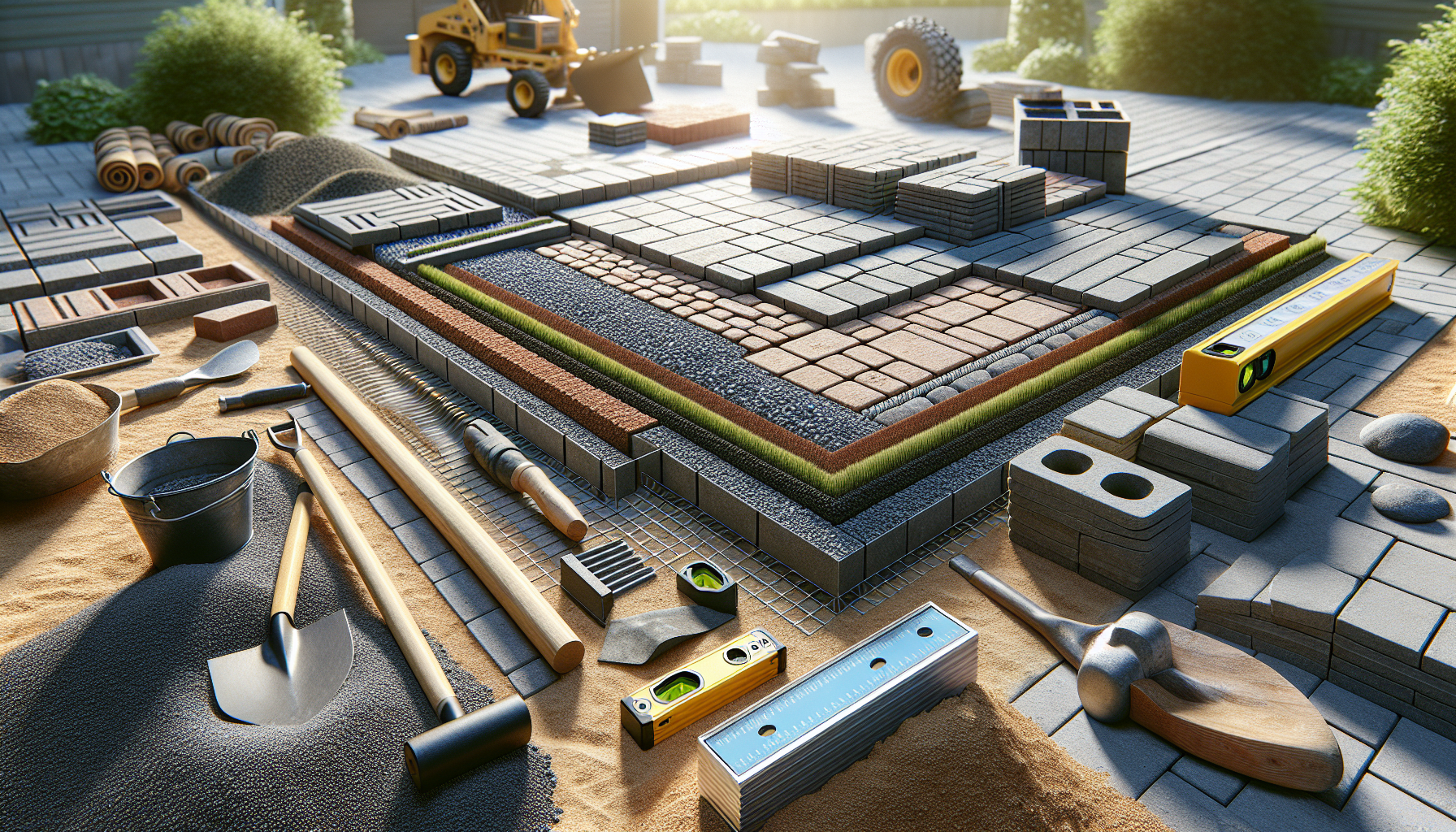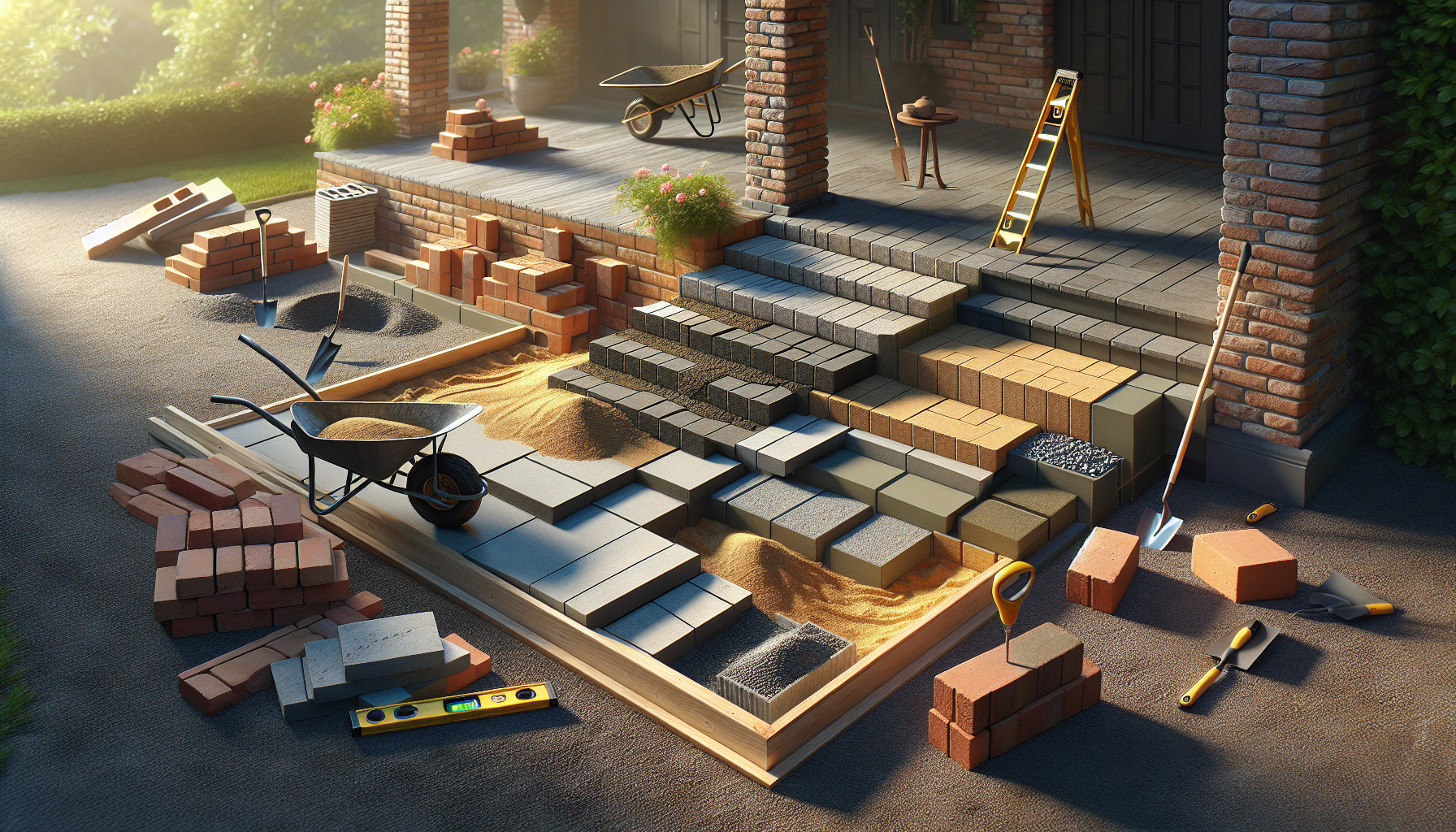
Creating an inviting outdoor space requires thoughtful planning and execution, which directly influences the overall timeline. The installation duration can vary greatly based on the complexity of the design process, with straightforward layouts occasionally taking just a few days, while more intricate configurations might extend into several weeks.
The initial preparation of the site is crucial, involving tasks like clearing the area and excavation that can last anywhere from one to several days, depending on the existing conditions.
Once this phase is complete, the patio construction time for laying down materials such as paving stones or concrete slabs typically spans two to five days.
Add to this mix the unpredictable nature of weather conditions and labor availability, which can further impact the timeline.
Click here to learn more about: deckbuildergoldcoast.com.au
Understanding Patio Construction Time
Importance of Planning
The insights gained about site preparation and the installation duration set a strong foundation for grasping the importance of planning each phase of your outdoor space project. Establishing a clear timeline for any backyard improvement is crucial for achieving the desired results.
Stages of the Process
Recognizing the various stages involved can significantly streamline the entire process. From planning and design to installation, each phase has its distinct time requirements. For instance, the selection of building materials plays a pivotal role in the overall duration of the project, as some materials may require longer lead times or handling that can affect the installation schedule.
Site Preparation
Proper site preparation ensures a solid base for paving stones or concrete slabs, which can further influence the installation complexity and overall timeline. It’s essential to consider various patio dimensions to ensure that everything fits well in your residential spaces.
Anticipating Delays
It’s crucial to be aware of potential weather-related delays or supply chain disruptions that may occur during any home renovation project. Maintaining effective communication with your contractor will not only aid in adapting to unexpected challenges but also ensure that your landscaping timeline stays aligned with your project planning goals.
Adapting to Conditions
Moreover, understanding the impact of climate conditions and seasonal factors on construction allows for better scheduling, which can help mitigate delays. Therefore, incorporating flexibility into your project management strategy can help accommodate any changes while focusing on outdoor aesthetics and functionality.

What Affects Installation Duration
Building on the insights from site preparation and the importance of planning, several factors can influence the time it takes to complete the project. The selection of building materials is particularly significant, as the choice between different types can either speed up or prolong the installation duration.
For instance, using paving stones rather than natural stone generally results in a quicker completion.
Furthermore, effective site assessment is key; ensuring proper ground leveling and excavation minimizes potential setbacks and contributes to a smoother process.
Climate conditions must also be taken into account, as unfavorable weather conditions such as rain or extreme heat can affect progress. Planning projects during more suitable seasons is vital for enhancing outdoor functionality.
Additionally, various other factors, including labor expenses, the need for construction permits, and the complexity of installation steps, play a role in determining the overall landscaping timeline to finalize the project.
Project Timelines
- Material selection can significantly impact project duration; for example, using paving stones can lead to faster completion than natural stone.
- Effective site preparation, including proper ground leveling and excavation, is essential to avoid delays.
- Adverse weather conditions, such as rain or extreme heat, can hinder project progress and should be considered in project planning.
- Factors like labor costs and construction permits also influence the overall time required to complete a project.
Essential Steps for Outdoor Space Preparation
Building on previous discussions about site preparation and factors affecting installation duration, transforming an outdoor area into a beautiful and functional retreat involves several key stages. These steps contribute to a successful outcome.
Understanding Your Space starts with assessing the current landscape and identifying natural drainage patterns. This is essential for effective project planning and preventing future issues.
This foundational knowledge helps create a layout design that enhances outdoor aesthetics while considering seasonal factors that affect soil conditions and the overall timeline of the project. It’s vital to consider how different seasons impact both the construction schedule and the performance of your selected materials.
Next, Planning and Design involves sketching a layout that incorporates practical elements like seating and walking paths. These features contribute to the outdoor functionality of the space. Choose building materials that are visually appealing and durable enough to withstand varying weather conditions without extending the estimated timeframe.
During the Site Preparation phase, clearing debris and marking boundaries are essential initial steps. Accurate excavation ensures a solid foundation for paving stones or concrete slabs, aligning with the project’s timeline and outdoor aesthetics. Confirming the patio dimensions and ensuring proper drainage solutions will prevent issues, particularly regarding installation complexity and ongoing maintenance.
Selecting the Right Building Materials
Considering the significance of site preparation and project planning, making smart choices about construction components is vital for the success of any project. Each option has unique characteristics that affect long-term durability, total cost, and visual appeal.
Grasping these aspects can lead to better decision-making and increased satisfaction with the final outcome. Examining how different landscaping features impact both layout design and practical use of the outdoor space is key.
Every element, from foundational choices to surface finishes, significantly shapes the overall aesthetic and functionality of the area. Taking time to research can result in selections that balance style with essential needs, particularly when factoring in installation complexity and material durability.
When selecting building materials, it’s important to align choices with anticipated project management strategies and necessary construction permits, as these factors can directly influence labor expenses and the overall landscaping timeline.
Construction Choices
- Durability: Choosing high-quality materials can greatly extend the lifespan of your structure.
- Cost Efficiency: Investing in strong components may lower long-term maintenance and replacement expenses.
- Aesthetic Value: The choice of finishes and landscaping features can boost the visual appeal, increasing property value.
- Functionality: Careful design and material selection can enhance the usability and flow of your outdoor space.
How Patio Dimensions Impact Project Timeline
After exploring material selection and project planning, it’s clear that the size and shape of a patio play a critical role in determining the overall construction timeline. Larger outdoor spaces typically require more extensive excavation and base preparation, leading to increased installation complexity that can extend the completion date.
Smaller projects may provide faster assembly, yet they still demand rigorous attention to detail to ensure a harmonious design integration with surrounding residential spaces. Each patio style introduces its own unique set of challenges, where more intricate designs require a greater investment of labor expenses and time during the installation process.
In addition to size and style, understanding and adhering to local building codes early on can prevent costly delays. This foresight is crucial for effective project management, helping to navigate the various parameters involved and maintain an efficient construction schedule. Factors such as climate conditions and site access can also significantly affect the landscaping timeline, making it essential to evaluate all aspects thoroughly during the site preparation stage.
Navigating Construction Permits for Home Renovation
Following the discussion on how patio dimensions affect project details, obtaining the correct construction permits is crucial for a successful home renovation. Understanding the regulations that govern home improvements safeguards your project and ensures that your landscaping design meets local building codes and standards.
Multiple types of permits may be needed depending on the scope and nature of your project. For instance, a site assessment could be necessary for extensive structural modifications, particularly when integrating features such as patio styles, paving stones, or drainage solutions.
Securing the right permits helps protect homeowners from unexpected fines or compliance issues that could hinder your project management efforts. Not acquiring necessary approvals can lead to costly delays and potential legal complications. This underlines the importance of familiarizing yourself with local regulations early in the project planning phase.
Moreover, understanding these requirements can streamline the installation duration, allowing for a smoother flow through the various installation steps. This proactive approach can enhance outdoor functionality and aesthetic appeal, ultimately contributing to the success of your backyard improvement projects.
The Role of Climate Conditions in Patio Building
Understanding the Impact of Climate
Building upon the importance of securing construction permits, it’s essential to recognize how climate conditions further shape the design process of an outdoor space. Various environmental factors significantly influence both the aesthetics and durability of your patio, highlighting the necessity of understanding local weather patterns.
Patio Design in Temperate Climates
In temperate climates, moderate conditions allow for extensive material selection and excavation techniques, facilitating more creative patio styles and design trends. Homeowners often find that this flexibility leads to enhanced outdoor functionality and aesthetic appeal, accommodating diverse landscaping features and outdoor furniture arrangements.
Challenges in Tropical Areas
Conversely, tropical areas present unique challenges due to heat and humidity, prompting the need for durable materials like concrete slabs and high-quality paving stones that can withstand these extremes and ease maintenance. Selecting the right building materials becomes critical here, as it can dramatically affect the longevity of your outdoor space.
Considerations for Cold Climates
For cold climates, vigilant attention to soil conditions is paramount. Proper management prevents frost damage and ensures that decorative elements maintain their integrity. In arid regions, however, strategies for water conservation are vital, which can influence site access and the overall usability of the area over time.
Adaptation for Effective Project Planning
Ultimately, recognizing these climate conditions leads to improved design choices tailored to each unique environment, contributing to efficient project planning and a successful backyard improvement project.
Tips for Managing Contractor Schedules Effectively
Having a solid grasp of site preparation and design considerations lays the groundwork for effective project management, particularly concerning contractor schedules. Proper oversight of timelines and workflows is vital in achieving project success, as it aligns various aspects of outdoor functionality, installation steps, and landscaping features.
Establishing Clear Expectations
Setting clear expectations from the beginning helps avoid misunderstandings about landscaping design trends and deliverables. Using project management tools can simplify updates, ensuring everyone is aligned on project planning and execution.
Regular Communication
Consistent check-ins enable teams to talk about challenges and adjust as necessary, especially when considering outdoor furniture integration into the schedule. Acknowledging that finishing touches often need adaptable planning can prevent delays and ensure the project stays on course.
Prioritizing Critical Tasks
Focusing on key tasks ensures that essential elements are tackled first, particularly concerning shade structures and decorative elements. Keeping organized documentation aids communication and accountability throughout the project lifecycle, streamlining the overall construction schedule.
Project Management
- Clear expectations can reduce misunderstandings by up to 50%.
- Effective project management tools can enhance team collaboration and communication.
- Regular check-ins improve project adaptability and problem-solving capabilities.
- Prioritizing tasks can lead to a 30% increase in project efficiency.
What Is The Cost Of Building A Patio
What materials are best for building a patio today
